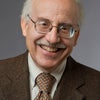Review of Polarized: Making Sense of a Divided America. By James E. Campbell. Princeton University Press. 313 pp. $29.95.
The political parties in the United States may well be more divided than they have been since the Civil War. In the 112th Congress (2011-2012), 91% of Democrats and 93.5% of Republicans voted with their fellow party members on roll calls, leaving little room for the formation of bi-partisan coalitions. From 2005-2012, every Democrat in Congress was to the left of every Republican. In 2013, 1% of Republicans in the House of Representatives and 4% in the Senate were moderates: the corresponding percentages of Democrats were 13 and 9.
The result, most observers agree, is a polarized and dysfunctional government. Less clear is how it got that way, whether the voters are as polarized as the politicians they elect, and what, if anything, we can do about it.
In Polarized, James Campbell, a professor of political science at the State University of New York, Buffalo, draws on a raft of empirical studies and circumstantial evidence to measure polarization and assess its impact. Campbell maintains, against conventional wisdom, that, polarization is not a top down phenomenon: increasing political differences among American citizens, not the activities of zealots, partisan media, or gerrymandering, resulted in a realignment of the parties along ideological lines. Though by no means a slam dunk, his argument constitutes a useful point of departure for political junkies across the political spectrum.
Like most political scientists, Campbell attributes realignment to the civil rights movement, which made the Democratic Party the home of virtually every African American and pushed a majority of white southerners into the GOP. In response to the tumultuous 1960s and '70s, he adds, working-class whites and suburbanites in the rustbelt and the sunbelt became Republicans. Ronald Reagan, Campbell claims, consolidated but did not cause the "big sort."
In any event, the partisanship and ideological perspectives of the electorate are now more aligned than they have been in decades, with liberals far more likely to be Democrats and conservatives Republicans. The chasm between the two is also much, much wider. A 2014 study conducted by the Pew Research Center for the People & the Press found that the percentage of Americans with a highly negative view of the opposing party has doubled since 1994: 27% of Democrats and 36% of Republicans believe the policies of the other party constitute a threat to the well-being of the United States. Many of these folks equate compromise with capitulation. And the most polarized Americans are more active in politics, Pew reveals, "amplifying the voices that are the least willing to see the parties meet each other halfway."
Polarized is perceptive and forcefully argued. The book's grassroots explanation of realignment, however, does not give sufficient weight to the role of elites, political structures and rules. According to Campbell, they are not "the real problem."
With "true believers" more likely to turn out at the polls than moderates, however, primaries often produce party nominees at the edges of the ideological spectrum. By increasing the number of safe seats in the U.S. House of Representatives and state legislatures, gerrymandering produces politicians who have little or no incentive to reach across the aisle and seek legislative compromises. And more and more Americans have issues framed for them by partisan sources or "echo chambers" (talk radio, cable news channels, blogs and social media).
Campbell acknowledges that polarization has "stressed the system," but insists that executive orders and excessive regulation by federal agencies constitute a "more serious danger to the political process" than polarization - and that gridlock "has not prevented the enactment of important laws." Liberals and conservatives and everyone in between, he writes, "want peace and prosperity, clean air and water, affordable energy, an educated, employed, and healthy citizenry, care for those who are truly unable to care for themselves, safe neighborhoods, fair and low taxes, efficient government, a government that pays its debts...Who could be against them?"
Campbell refutes himself, it seems to me, when he admits that conservatives and liberals "have different understandings of what these goals entail as well as how best to achieve them." After all, those different understandings have produced a government shutdown (over payment of debt), paralysis over immigration and transportation legislation, and a Congress that votes repeatedly and futilely to repeal the Affordable Care Act.
The problems ascribed to contemporary American politics, Campbell concludes, "are not so much the result of too many people being liberals and conservatives, but of too many of these polarized people being a bit too pig-headed, narrow-minded, unrealistic, disrespectful, and ill-informed."
Perhaps. But these "amateurish dispositions" - and the disparagement of compromise - are the result of "the new normal" in American politics, a phenomenon that depends to no small degree on the rules of the game, on structures and rules, and on the framing of issues by elites.
And Professor Campbell to the contrary notwithstanding, it may not be possible, in these troubled and troubling times, to "keep calm and carry on." Nor would it be wise to bank on "the exhausting effects of stressful polarized conflicts" on an electorate that "has no stomach for intense and protracted political conflict" to come to the rescue.
